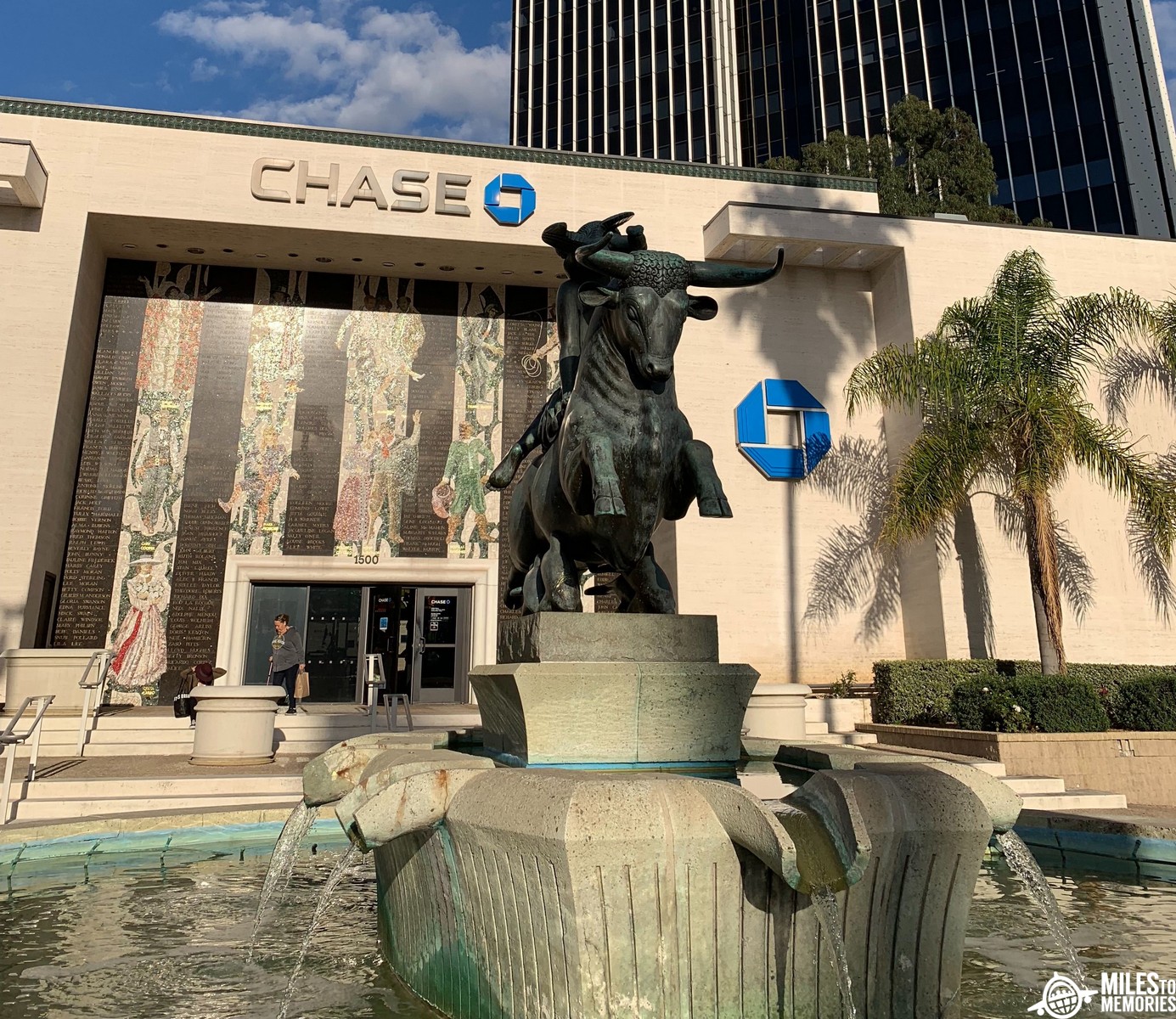
Best Bank Points Programs: Pros and Cons of Each
I’m firmly convinced that Chase Ultimate Rewards, American Express Membership Rewards, and Citi ThankYou represent the best bank points program. Sure, you now have Capital One and Barclays Bank in the transfer game, but they are second-tier, in my mind. The “Big 3” programs have long been the options for most folks.
You may be wondering which of the transferable bank points programs is best. While I don’t think you can argue for one being the best, there is certainly a case for why, or why not, you may want to use one over another. Mark tackled how he ranks the three transferable currencies, placing Chase Ultimate Rewards below American Express Membership Rewards.
It all comes down to how you use the points, though. What I’d like to explore are the pros and cons of each of the three best bank points programs.

Chase Ultimate Rewards: Pros and Cons
Chase Ultimate Rewards used to be the end-all currency for me. With transfer partners including World of Hyatt and United Airlines, I couldn’t get enough. These were the two programs I used most in my early award travel days with my flexible points, and all my points went to bolster these accounts.
However, I have a much more realistic view of the program now that I’ve tapped into what American Express and Citi can offer. While Chase Ultimate Rewards are certainly still valuable, I wouldn’t necessarily consider them the top currency like I once did. Here are the pros I see for Chase Ultimate Rewards:
- Best unique hotel transfer partner in World of Hyatt
- Excellent unique transfer partner with United
- Cash value of points is best, at 1.0 cents each
- Best travel portal booking value, with point being worth 1.5 cents each for travel using your Chase Sapphire Reserve
- Serious earning potential with excellent no-fee cards, including the Chase Ink Cash, Chase Freedom Flex, and Chase Freedom Unlimited
- Ability to combine points easily between household accounts
- Most “user friendly” airline transfer partners, with United, Southwest, Virgin Atlantic, and British Airways Avios.
But there are some downsides to going all-in with Chase Ultimate Rewards. Here are the cons I see in the program:
- Very limited unique transfer partners (United, Southwest & Hyatt)
- Serious lack of transfer bonuses (only ever had one)
- Three of their transfer partners are essentially all the same currency: Avios
- Underwhelming hotel transfer partners beyond Hyatt
The loss of Korean as a transfer partner really hit Chase Ultimate Rewards hard, in my opinion. They really only have Hyatt and United as the useful, unique transfer partners.You could throw Southwest in there if you have the companion pass as well. All the rest are covered with other currencies. Still, if you’re heavily into MileagePlus and World of Hyatt for your award needs, then Chase Ultimate Rewards is your program.

American Express Membership Rewards: Pros and Cons
Where Chase shines with an excellent hotel partner and a very useful unique airline partner, American Express has its own wealth of potential to offer. First off, their earning rate is generally better than Chase Ultimate Rewards for many consumers. They also have a larger array of transfer partners, with a couple amazing unique ones. Here are the primary upsides I see in American Express Membership Rewards:
- Fantastic earning potential with the American Express Gold card and the Blue Business Plus card
- Wealth of transfer partners, with a total of 19 different airline partners, at least 14 of which offer good to excellent award value, depending on your use.
- Frequent transfer bonuses to useful programs like Avianca LifeMiles, Virgin Atlantic Flying Club, Aeroplan, and Cathay Pacific Asia Miles
- Excellent unique transfer partner with ANA Mileage Club
- Other unique partners (among the Big 3 currencies) in Aeroplan and Delta
- Situationally good hotel transfer partner in Choice Hotels
But there are some downsides, too. Here are the cons of investing in American Express Membership Rewards:
- Low cash value for points (0.6 cent each), if you need to redeem them this way. Although you can get 1.25 cents per point with the Charles Schwab Platinum card.
- Inability to transfer to other household members, or to their partner accounts. You can transfer to their loyalty accounts if they are an authorized user though.
- Weak hotel partners (Choice is very situational). Hilton and Marriott are only an option when they have large transfer bonus offers.
- More advanced knowledge needed to make use of some of the best transfer partner options.
In general, I focus far more heavily on Membership Rewards these days than I ever did before. The main thing is the earning rate. If I can earn 2 points per dollar with my Blue Business Plus card and redeem them for domestic flights on United through Aeroplan or Avianca LifeMiles, this is a better return than banking Ultimate Rewards for United. For all intents an purposes, MR are the best bank points program for me.
Although Citi made its run for the best option for booking domestic United flights…

Citi ThankYou: Pros and Cons
Citi ThankYou used to be the worst of the “Big 3” programs in my mind, mainly because their transfer partners weren’t as nice as the other two programs. But…there is still some potential here, and depending on your need, Citi ThankYou could easily be a favorite program. Here are the pros to collecting Citi ThankYou points:
- Extremely useful unique transfer partner in Turkish Airlines Miles & Smiles (as long as they get their award redemption issues sorted out)
- Some very unique airline transfer partners in EVA, Malaysia, Thai and Qatar.
- Decent earning rates with various cards, including 2x points on all purchases with the Double Cash card now earning ThankYou points as well.
- Frequent transfer bonuses
- Solid transfer option in each of the main alliances
Here are the downsides to investing heavily in Citi ThankYou:
- No hotel partners
- Limited value in unique partners EVA, Thai and Qatar.
- Mostly non-instant transfer times, which can be annoying
- Cash value of just 0.5 cent per point unless you use them “towards your mortgage”.
- Basically kaput airline partner in Jet Airways (program does hold some value)
With Asia Miles, Avianca LifeMiles, Etihad Guest, Turkish Miles & Smiles, Flying Blue, Singapore KrisFlyer, and Virgin Atlantic Flying Club all participating in Citi’s program, it’s hard to argue that they don’t offer good value. The issue is that they are overshadowed by American Express, who also has each of these transfer partners with the lone exception of Turkish Airlines Miles & Smiles.
If Turkish once again allows Star Alliance partner bookings, investing in Citi ThankYou could be worth it for that alone. In my personal opinion, much of the value hinges on this single partner. The lack of a hotel partner is also a massive hole in the program.

Which is the Best Bank Points Program?
I’m not going to answer that for you, as it really depends how you use the points. But if I had to rank the programs, I’d have to agree with Mark’s assessment. American Express Membership Rewards offer excellent earning and value across the board, with a great array of partners. However, Chase holds by far the best hotel partner with Hyatt. Citi’s silver bullet is Turkish, but if Miles & Smiles doesn’t get their issues worked out, the value will be a whole lot less in my mind.
I hope this has given you a nice overview of the pros and cons of each of the best bank points program options. What are your favorite uses of points, and which do you think is the best?



In terms of cash value, Citi TYP have a cash value of 1 cent per point if you hold the the Prestige card.
Interesting. I wasn’t aware of that. Thanks for the comment!
I’m earning most of my Membership Rewards through Rakuten nowdays. I have an AMEX BBP card that I used to setup a Rakuten account that earns Membership Rewards. Then, I got the Rakuten credit card which earns 3X Membership Rewards on top of the portal payout whenever I use Rakuten as the shopping portal. My trips to GiftCardMall net me about 2000 Membership Rewards for a cost of either $6.95 or $5.95.
Dang. That’s an insane return!
I like that you evaluate the programs on a pros and cons basis rather than to say XXX program is the best one. Everyone has different circumstances and those factors can change as well as the programs themselves.
When I retired 5 years ago and decided to take 4 trips a year, I sat down and evaluated the way I would travel and where I would go. My travel would be 90-100% international in most years and to Asia a majority of the time with Taiwan at least once a year. Even though I had 100,000 points each in the United and Delta programs at the time that I had accumulated over many years of flying about once a year for a vacation trip, I had almost never able to redeem them for anything.
I ultimately ended up going with EVA Airlines which I had never heard of before I flew them and only went with them because my travel agent had flown them before. Of course now they are one of the top 2-3 airlines I have every flown. But the Citi programs perfectly complements being in the EVA program as I have transferred over 80,000 miles to the program. EVA miles expire in 36 months so the miles that I have in Citi allows me to avoid the expiration. I transferred in enough points so I can upgrade from Premium Economy to Business Class…as this is how I used the program. Basically I pay $1500 for a RT flight, then redeem 70,000 miles to upgrade to a seat worth $4500 to $5,000. I have done this on the equivalent of 3 RT flights so far in 3 years and have saved at least $10,000 in the process. So for me….the EVA program and the Citi program at the best combination.
But what works for me probably does not work for a lot of other people. That is why is is best to know yourself and what your travel preferences are.
I still periodically look at the credit cards out there and consider whether the benefits being offered are of any benefit to me. So far….I am happy with what I have.
Nice! 35,000 each way for an upgrade doesn’t sound too bad, considering most currencies charge you 70,000-85,000 each way for business outright.
You could essentially divide this post into two categories: everyday users and power users. For power users, this is a solid round-up of each of their pros and cons.
For everyday users, I don’t think any program holds a candle to Chase UR. Trying to show my dad or some of my non-points-obsessed friends how to make awards bookings through transfer partners using alliances and partnerships to get flights for outstanding value is a total lost cause–too complicated, too limited, too much like their old airline cards where they had trouble using their miles. Being able to book the tickets they want and get 1.25-1.5x value for their points, is a no-brainer for them. Aspirational? Hardly. Practical? Absolutely.
I’m transitioning from aspirational to practical next year. I’ve done international first, but discount biz is fine these days, especially if I don’t have to take an extra week off to make the flights fit mine and my familys’ schedule.
That is where the cash value (and portal value) of points comes in, which I touch on. But you’re right, for people just getting into miles and points, I nearly always point them at Chase (also for 5/24 reasons) due to the simplicity and low barrier to entry with the CSP.
I’ve actually found Jetblue to be a great transfer partner with Citi (during transfer bonus times). It did require having a few other cards, but it made for a great redemption. With the 25% bonus for transfer to Jetblue and the Citi Rewards+ to get 10% TY points back and having the Barclay’s Jetblue Plus card to get another 10% back on the redemption side, it essentially pushes the value up to almost 2 cents per TY pt.
don’t forget to double up on that 10% rebate by getting the biz card too.
Are you getting the 20% off for both cards? I have both cards, but I’m only getting 10% off. I thought i read this loophole was closed.
Nice. I’ve always looked at JetBlue as subpar, as you’re getting 1.3-1.6 cents per point. Never realized how well you could stack all those bonuses.